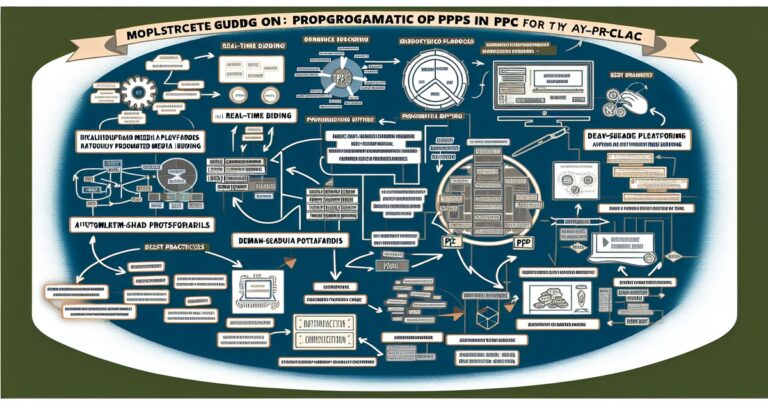Behind Every Great Design is a Graphic Designer
Have you ever noticed the designs on your favorite cereal box, or the eye-catching posters and billboards that line the streets? What about the cool logo on your t-shirt or the sleek graphics in your favorite video game?
All of these are examples of graphic design. In today’s world, graphic design has become one of the most important careers across various industries.
From advertising to publishing and beyond, almost every business needs a talented graphic designer to create visually appealing content for their brand. So what exactly is graphic design?
At its core, it’s the art of combining text and images to create visual communication materials. This field requires creativity, problem-solving skills, attention to detail, and an eye for aesthetics.
Graphic designers work with clients to develop various types of visual content such as logos, brochures, websites, advertisements, packaging designs, etc. The role of graphic design in various industries cannot be overstated.
For instance: – Advertising: In this digital age where people have shorter attention spans than ever before; advertisements must grab attention quickly while communicating essential information succinctly; it’s a perfect task for a skilled graphic designer.
– Publishing: The book covers we see at different corners online or offline; are the epitome of what great design can do in attracting readership. – E-commerce businesses depend heavily on product images for sales conversion; high-quality photographs with responsive interfaces make all the difference – thanks again to our friends in graphics designing.
As we can see from the few examples cited above – besides making things aesthetically pleasing – Graphic designers play an essential role in developing branding messages that resonate with consumers’ emotions while companies navigate their way through new market challenges. Now that we have discussed what this career entails let us delve into how you can set yourself up for success as a graphic designer.
Education and Skills Needed
Becoming a graphic designer requires a combination of education and practical experience. While some may choose to pursue a formal education in graphic design, others may opt for self-taught methods.
Both routes have their advantages and disadvantages. For those who choose the formal education route, they can expect to undertake courses that cover topics such as design principles, typography, color theory, digital media production, and web design.
A formal education in graphic design also helps budding designers acquire essential skills such as critical thinking, problem-solving, project management abilities, and communication skills. On the other hand, self-taught designers need to be highly motivated to learn on their own through online tutorials or books.
This path is sometimes preferred because it offers more flexibility than traditional classroom learning. Self-taught designers must also practice discipline in mastering new software programs used in the industry continually.
Formal Education vs Self-Taught
A formal education in graphic design can be obtained at community colleges or universities across the country. These institutions offer degrees ranging from associate’s to master’s level programs with coursework that blends theoretical concepts with practical real-world applications.
Self-taught designers can learn from a vast amount of resources available for free online or by investing in paid courses through platforms like Skillshare or Udemy. Some individuals prefer this path because they have control over the pace of their learning; however, this approach requires discipline and motivation since there are no deadlines or pressures to adhere to coursework.
Choosing between a formal education in graphic design versus self-teaching is an individual decision based on personal circumstances and goals. Aspiring designers should consider their budget constraints when deciding on pursuing higher education versus learning on their own.
Essential Skills for a Graphic Designer
Graphic designing is not only about creating visually appealing designs but also understanding how your work can impact the target audience. To succeed in this career, graphic designers must possess several skills, some of which include: Creativity: One of the most important skills for a graphic designer is creativity.
Designers must be able to generate original and innovative ideas for their projects. Attention to detail: Graphic designers should have a keen eye for detail, ensuring that every element of their design is visually appealing and adds value to the overall project.
Communication: Clear communication with clients or team members is essential in the graphic design industry. Designers should be able to articulate their ideas and designs effectively.
In addition to these essential skills, designers should also possess technical know-how in using industry-standard software such as Adobe Creative Suite (Photoshop, Illustrator, InDesign), Sketch, and Figma. Other soft skills like time management, project management, and problem-solving will help designers stand out amongst their peers.
To improve these necessary skills continually, designers can participate in workshops or training programs designed explicitly for professional enhancement. By doing so, they can stay ahead of the ever-changing trends within this field while also honing their craft.
Job Opportunities
Different Types of Graphic Design Jobs
There are a variety of graphic design jobs out there, ranging from freelance work to in-house positions at large companies. Freelance graphic designers work on a project-by-project basis for clients, while agency designers typically work with a team of other designers to create designs for multiple clients. In-house designers, on the other hand, work full-time for one specific company and create designs exclusively for that company.
Freelance graphic design can be great for those who want the freedom and flexibility to choose their own projects and set their own schedules. However, it can also be difficult to find consistent work and get paid fairly.
Agency graphic design is often fast-paced and challenging, but can also provide opportunities to work on high-profile projects with big-name clients. In-house positions may offer more stability and benefits but may limit the variety of projects you get to work on.
Pros and Cons of Each Type
Freelance graphic design offers the freedom to choose your clients and set your own rates, but it also means you have to constantly market yourself in order to find new clients. Additionally, being a freelancer means you are responsible for handling your own taxes, insurance, and other administrative tasks. Agency graphic design can be exciting as you’ll likely have access to many cool projects with reputable brands depending on the agency’s clientele; however it usually puts more pressure on meeting tight deadlines as well as working within an established corporate structure.
It’s important that you learn how an agency works if you decide that this is a path that suits your interests. In-house graphic design provides consistency in terms of workload which could allow for some breathing room when dealing with deadlines or personal matters; however there may not be much room in terms of creative flexibility since designing directly for one company could mean adhering strictlyto their branding guidelines or industry-specific guidelines.
Industry Trends and Technologies
Current trends in graphic design
The world of graphic design is constantly evolving with new trends emerging every year. One trend that has gained popularity in recent years is minimalism. The use of clean lines, muted colors, and simple typography to create sleek designs has become increasingly popular in the industry.
Another trend that has been making waves is the use of bold typography, where designers experiment with different fonts and sizes to create attention-grabbing designs. In addition to these two trends, there has also been an increased focus on sustainability within the industry.
Many companies are now looking for ways to reduce their environmental impact through eco-friendly designs and materials. This means that designers who are able to incorporate sustainable practices into their work are highly sought after by clients.
Technologies used in the industry
Graphic design is a field heavily reliant on technology, and there are several software programs that have become essential tools for designers. Adobe Creative Suite is one such program, which includes popular software like Photoshop, Illustrator, and InDesign.
These programs allow designers to create stunning visuals across a range of mediums including print media, web design, and mobile applications. Another software program that has gained popularity in recent years is Sketch.
This intuitive interface allows designers to easily create wireframes and prototypes for websites and apps while also providing collaborative features for team-based projects. Aside from specific software programs, advancements in hardware have also had a major impact on the industry.
The rise of tablets with stylus pens has allowed designers to work on-the-go more easily than ever before. With technology constantly evolving at a rapid pace, it’s important for graphic designers to stay up-to-date with new developments in order to remain competitive within the industry.
Building Your Portfolio
The Importance of a Strong Portfolio
Your portfolio is your calling card as a graphic designer. It’s the first thing potential clients or employers will see, and it can make or break your chances of getting hired. A strong portfolio showcases your skills, creativity, and range of abilities.
It should demonstrate that you have experience working on a variety of projects and can adapt to different styles and requirements. A good portfolio should also be well-organized and easy to navigate.
Make sure each project is clearly labeled with the client’s name, type of project, and your role in the project. Include a brief description of each project, outlining the goals you were trying to achieve and any challenges you faced along the way.
Remember that quality is more important than quantity when it comes to building your portfolio. Rather than including every piece of work you’ve ever done, choose only your best work that showcases your skills and expertise.
Tips for Creating an Effective Portfolio
Here are some tips for creating an effective portfolio: 1. Tailor it to the job: When applying for a specific job or client, make sure your portfolio reflects work that is relevant to their needs. For example, if you’re applying for a job at an advertising agency specializing in healthcare clients, include samples of healthcare-related projects in your portfolio.
2. Show diversity: While it’s important to tailor your portfolio to the job or client at hand, it’s also important to show range in terms of style and medium. Include examples that showcase different design styles (e.g., minimalist vs ornate) as well as different types of projects (e.g., print vs digital).
3. Keep it updated: Your portfolio should be a living document that evolves over time as you gain new skills and tackle new challenges. Be sure to update it regularly with new projects so that it always showcases your most recent and relevant work.
Remember, your portfolio is a reflection of you as a designer. Take the time to craft a strong, effective portfolio that showcases your skills and experience in the best possible light.
Finding Clients or Employers
Networking Strategies for Finding Clients or Employers
Networking is a crucial part of any business, and graphic design is no exception. Building strong relationships with clients and employers can lead to long-term success in the industry.
One of the best ways to network as a graphic designer is to attend industry events, such as conferences, workshops, and meetups. These events give you the opportunity to meet other professionals in your field, learn about the latest trends and technologies, and showcase your work.
Another effective networking strategy is to join professional organizations like AIGA or Graphic Artists Guild. These organizations offer various benefits like access to exclusive job boards, mentorship programs, and educational resources.
They also provide opportunities for members to connect with one another through online forums and local chapter meetings. Don’t underestimate the power of social media for networking purposes.
Platforms like Twitter, Instagram, Behance or LinkedIn can help you promote your work and connect with potential clients or employers. Use these platforms to share examples of your work (or works-in-progress), engage with other designers in your community by commenting on their posts or reposting their content.
Online Platforms To Showcase Your Work
In today’s digital age, it’s critical for graphic designers to have an online presence where they can showcase their portfolio easily accessible by anyone who might want to hire them . There are several online platforms that allow designers from all levels of experience – from beginners all the way up through seasoned professionals -to showcase their work effectively:
1- Behance: owned by Adobe systems provides a powerful platform used by professional artists around the world. 2- Dribbble: this platform attracts top talent in design industries worldwide; membership provides access not only for showcasing projects but also finding potential leads
3- Coroflot: Serving more than 150 countries worldwide, Coroflot provides its members with a professional online profile that showcases work samples along with company or personal information that can help potential clients find them easily. When selecting the right platform, it is crucial to keep in mind your target audience and industry.
Choose the platform that best suits your type of work and clients. A good rule of thumb is to showcase only your best work on these platforms, as quality always beats quantity in the graphic design world.
Salary Expectations and Career Growth
The Average Salaries for Different Types of Graphic Designers
When it comes to salary expectations, there are a lot of variables that come into play. Your education level, experience, and the type of company you work for can all impact your salary.
According to Glassdoor, the national average salary for graphic designers is $48,561 per year. However, this number can go up or down depending on where you live and what industry you work in.
Freelance graphic designers typically charge an hourly rate that can range from $25 to over $100 per hour. While they have more control over their workload and clients, they also have to account for expenses such as health insurance and retirement savings.
Graphic designers who work in-house at a company typically earn a salary with benefits that can range from $45,000 to over $80,000 per year. Meanwhile, those who work at advertising agencies usually earn commissions or performance-based salaries in addition to their base pay.
Opportunities for Career Growth
As technology continues to advance and businesses rely more heavily on visual content marketing strategies, the demand for skilled graphic designers is expected to rise. Therefore if you stay current with trends and technologies in the field of design there are plenty of opportunities for career growth as well as higher salaries.
One way graphic designers can advance their careers is by specializing in a specific area within the field such as branding or user interface design. Those with creative talent might consider moving into positions such as creative directors or art directors which often involve managing other designers.
Becoming involved with professional organizations related to your field (e.g., AIGA) can also help grow your career by providing networking opportunities which leading towards future jobs or clients. Additionally taking on freelance projects outside of your normal scope of work (e.g., designing for startups or small businesses) can help as well in building your portfolio and leads towards a reputation for being versatile and open to challenges.
Challenges Faced by Graphic Designers
The Clients from Hell: Dealing with Difficult Clients
One of the biggest challenges that graphic designers face is dealing with difficult clients. Whether they are indecisive, overly demanding, or simply have unrealistic expectations, difficult clients can make a project feel like a nightmare.
One way to overcome this challenge is through communication. It’s important to set clear expectations upfront about what you can and cannot do, as well as what the client can expect from you.
Additionally, it’s important to listen carefully to the client’s needs and concerns and address them as best you can. Another strategy is to be proactive in addressing potential conflicts or issues before they arise.
For example, if you know that a particular client has a tendency to make changes at the last minute, you might build in some extra time for revisions into your project timeline. Ultimately, it’s important to remember that difficult clients are an inevitable part of any career in graphic design and that learning how to deal with them effectively will help you succeed in the long run.
Tight Deadlines: Staying Creative Under Pressure
Another common challenge for graphic designers is working under tight deadlines. Whether it’s due to a client’s request or an internal deadline set by your employer, being able to produce high-quality work under pressure is key. One strategy for overcoming this challenge is breaking down tasks into smaller chunks and setting mini-deadlines for each one.
This helps you stay on track and avoid feeling overwhelmed. Additionally, try not to let perfectionism get in the way of progress when working under tight deadlines.
While quality work is important, sometimes good enough really is good enough when working within constraints like time limits. Don’t forget that taking breaks and stepping away from your work periodically can actually help boost creativity and productivity when working on tight deadlines.
Keeping Up with New Trends and Technologies
In the fast-paced world of graphic design, keeping up with new trends and technologies can be a daunting task. However, it’s essential to remain relevant and competitive in the industry.
One strategy for staying up-to-date is to attend industry conferences or workshops, where you can learn new skills and network with other professionals. Another approach is to seek out online resources such as blogs, podcasts, or video tutorials that cover emerging trends or new software features.
Additionally, don’t be afraid to experiment with new tools or techniques in your own projects to stay creative and continue learning. Ultimately, being willing to adapt and evolve as the industry changes will help you overcome this challenge and ensure long-term success as a graphic designer.
Conclusion: What You Need to Remember
After reading this article, you should now have a better understanding of what it takes to pursue a career in graphic design. From the essential skills needed to succeed in the industry, to the various job opportunities available and the technologies and trends currently shaping the field, there is much to consider. Whether you decide to pursue formal education or take a self-taught approach, remember that creativity, attention to detail, and effective communication are vital traits for any successful graphic designer.
In terms of finding clients or employers, networking strategies and online platforms can be effective ways to showcase your work. Building a strong portfolio is also crucial for standing out in a competitive job market.
While challenges like difficult clients and tight deadlines may arise, remember that these obstacles can be overcome with patience and perseverance. And as you gain experience and develop your skills further, opportunities for career growth and higher salaries may become available.
In short, pursuing a career in graphic design can be an exciting journey full of learning opportunities and creative fulfillment. With dedication, hard work, and persistence – as well as an eye for design – you can make your mark in this dynamic field and create designs that inspire others.









